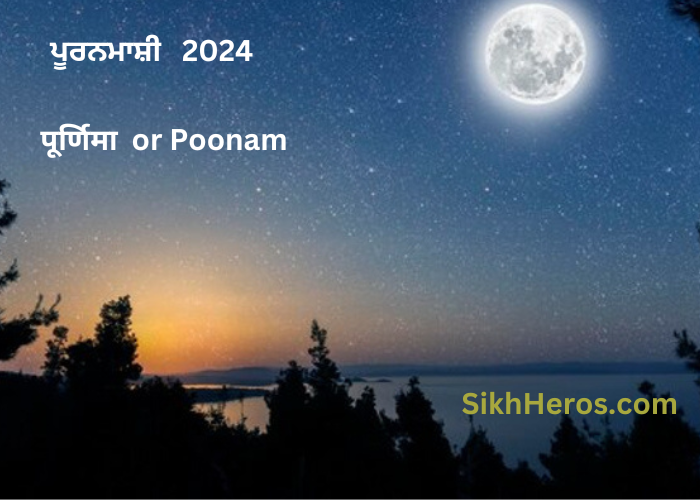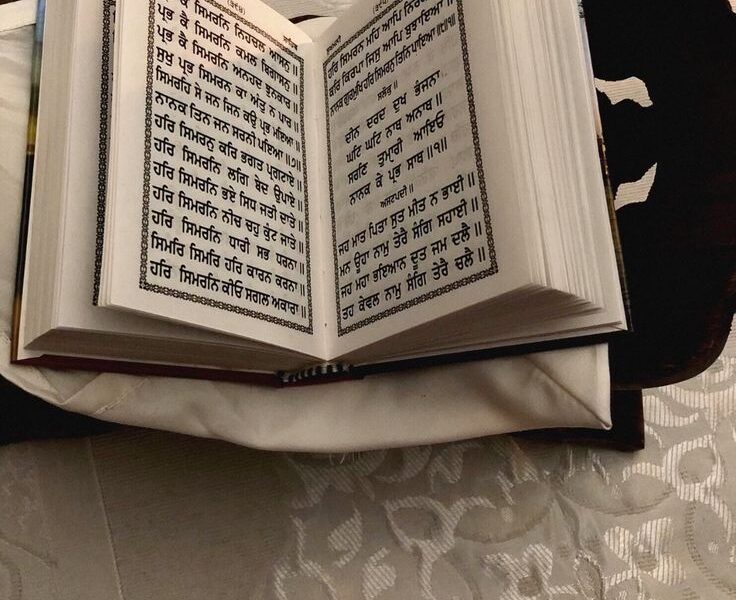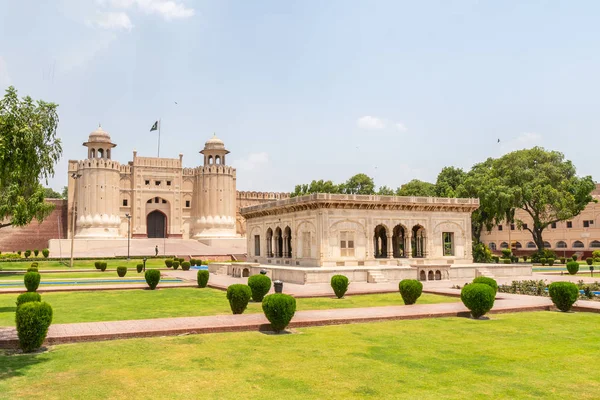Puranmashi( ਪੂਰਨਮਾਸ਼ੀ or पूर्णिमा or Poonam) is month day when the Full Moon occurs.
This special day is filled with traditions, celebrations, and a touch of magic under the light of the full moon.
Purnima is like the superhero of the month because it’s the day when the Full Moon shows up. It also does a cool job of splitting the month into two parts in Indian calendars – one part is called Krishna Paksha, and the other is Shukla Paksha.In calendars like Bikrami, Vikram, and the Nanakshahi Calendar, these Pakshas (which are like the moon phases) have some fun nicknames. They call them Sudi and Vadi.
Krishna Paksha happens during the 15 days between Poornima (Full Moon) and Amavas (New Moon), and Shukla Paksha is the 15 days between Amavas and Purnima.
The 15th day of Shukla Paksha, also known as Sudi, is the amazing day of Purnima or Poornmashi. It’s like a lunar celebration!
What is Puranmashi?
Puranmashi, or Purnima, is a word that means “full moon during night” in Sanskrit. Think like the sky is glowing with the soft light of the full moon, making everything sparkles like silver. This occurrence happens every month, and each Puranmashi is a unique celebration filled with joy and spiritual significance.
In science, Purnima doesn’t have a big role, but it’s linked to the lunar calendar and how the moon moves. The full moon happens when the sun fully lights up the moon with the Earth in between. The exact day of Purnima can change, depending on when people see the full moon.
Puranmashi or Purnima, is well known as special day in Sikh and Hindu religions. It happens when the moon is full in the sky during a lunar month. Both Sikhs and Hindus people celebrate this day with prayers and special activities.
Significance of Puranmashi:
Puranmashi is not just a pretty sight in the sky; it holds deep cultural and religious importance. It’s like nature’s way of throwing a cosmic party! Different communities celebrate Puranmashi in various ways, making it a day of prayers, reflection, and festivities.
In Sikhism, Purnima is important for thinking about and following the teachings in their holy book, the Guru Granth Sahib. Many Sikhs go to their places of worship, called Gurdwaras, on Purnima to listen to special music and get blessings from their Guru.
People also see Purnima as a day to forgive others and let go of any hard feelings. Some Sikhs also fast on Purnima and eat only after seeing the full moon.
For Hindus, Purnima or Puranmashi is a lucky day for doing spiritual things like fasting, meditation, and worshiping their gods. They believe that anything good they do on Purnima gets extra special blessings. Some Hindus even fast the whole day and only eat after they see the full moon at night.
So, Both Sikhs and Hindus on this day celebrate with prayers and special actions, believing it brings good luck. It’s also a day for forgiveness, looking back, and making positive changes in life.
Importance of Puranmashi Or why is Puranmashi so special?
It is believed that the full moon brings positive energy and a sense of renewal. People generally come together to pray, meditate, and celebrate life on this day. It’s like hitting the reset button and starting new as we do generally with our mobile or computer when things hang up or slow down.
People don’t believe Purnima directly changes their fate, but they think that whatever they do on this day affects their spiritual growth and well-being. It’s a time to look back, make good choices, and be a better person.
History of Puranmashi / Purnima:
Puranmashi has a rich history in ancient traditions. It has been celebrated for centuries, and stories from Hindu mythology often connect Puranmashi to special events and divine occurrences. The tales behind Puranmashi add a layer of magic to this already wonderful day.
Benefits of Puranmashi Fast:
Some people choose to fast on Puranmashi as a way of cleansing the mind and body. Fasting is like taking a break from regular meals to focus on spiritual growth. It’s believed that observing a fast on Puranmashi brings positive vibes and good health.
Is Puranmashi Full Moon?
Yes, indeed! Puranmashi is all about the full moon, when the moon shines its brightest. The sky turns into a natural night lamp, creating a cool and beautiful atmosphere. It’s a perfect time for moonlit adventures and observe the stars!
All About Guru Purnima:
Guru Purnima is a super special Puranmashi dedicated to expressing gratitude to our teachers, or gurus. It’s like a giant thank-you card to those who guide us on our life journey. People celebrate by offering prayers, sharing stories, and expressing their appreciation for the wisdom shared by their gurus. So, It’s a day to honor and celebrate the teachers, mentors, and guides who play important role in shaping our lives. On this day, don’t forget to say a big thank you to your favorite teachers!
It’s a time to acknowledge the wisdom, guidance, and love they share with us.
Akhrot Purnima:
Ever heard of Akhrot Purnima? Well, it’s a unique celebration where people enjoy walnuts, also known as “akhrots.” These delicious nuts are believed to have special health benefits, making Akhrot Purnima a tasty and nutritious affair.
Pitra Purnima:
Pitra Purnima is another unique celebration where people pay respects to their ancestors, or “pitras.” It’s a day to remember and honor those who came before us, expressing gratitude for the legacy they’ve left behind.
Purnima Panchang:
Purnima Panchang is like a cosmic calendar that helps us keep track of the full moon days. It tells us when to expect the magical glow of the full moon, allowing us to plan our celebrations and activities accordingly.
Kartik Purnima:
Kartik Purnima is a special Puranmashi celebrated in the month of Kartik, generally in November. It marks the end of the Kartik month and is related with various rituals and festivities. It’s like the grand finale of the month-long celebrations!
Jyeshtha Purnima:
Jyeshtha Purnima is Puranmashi celebrated in the month of June also known by Jyeshtha. It’s time when nature is in full bloom, and people celebrate the beauty of the season. Jyeshtha Purnima is like a mid of summer night’s dream, filled with joy and different colors.
Shravana Purnima:
Shravana Purnima is like a superstar in the month of Shravana. It’s not just one celebration; it’s like a party with different names! People also call it Hayagriva Jayanti, Gayatri Jayanti, and it’s the famous Raksha Bandhan day when brothers and sisters celebrate their special bond.
Vat Purnima:
Vat Purnima, celebrated generally by hindu married women in Nepal, North India, and the Western Indian states of Maharashtra, Goa, and Gujarat. This happy event takes place on the full moon day (Purnima) within the three days of the Hindu month of Jyeshtha, falling around May to June.
During this celebration, married women express their deep love for their husbands through a beautiful tradition. They with love tie ceremonial thread around a banyan tree. This is from religious past story of Savitri and Satyavan.
Savitri devotion and her determination helped her to safe her husband Satyavan life from the hands of Yamraj from death.
So in honor of this story, married women performs the symbolic act of tying the thread around the banyan tree, symbolizing their commitment, love, and the strength of their bond of marriage. Vat Purnima is not just a celebration; it’s a heartfelt expression of the enduring love between husbands and wives, echoing the timeless tales of devotion from Hindu mythology.
Sharad Purnima:
Its the time for an autumn harvest festival! Sharad Purnima, also known by Kojagiri Purnima, occur on the full moon day of stars. It’s the time to celebrate the harvest and this way people enjoy the beauty of the changing season
Buddha Purnima:
You know Gautama Buddha? Buddha Purnima marks his special day – the day he was born! It’s celebrated on the full moon day of Vaishakha. And guess what? Kurma Jayanti, celebrating the turtle incarnation of Lord Vishnu, also joins the party on this day!
Holi/Phalguna Purnima:
Holi known by spring festival of colors, is celebrated on the full moon day of Phalguna. Celebrated generally by Hindus, Buddhists, and Jains, they use colors to welcome the joyful season.
Shraddha Purnima:
Last but not least, Shraddha Purnima! On the full moon day of the month of Bhadra, people perform special rituals to honor the divine couple Shiva and Parvati. There’s also a cool Shakra Vrata, where Indra is worshipped for children’s well-being.
As per Nanakshahi Calendar
| Month | Dates CE 2024 | Dates Nanakshahi | Special Events (Punjabi) |
|---|---|---|---|
| Jan | January 25, 2024 Thursday | 12 Magh, Nanakshahi 555 | – |
| Feb | February 24, 2024 Saturday | 12 Faggan, Nanakshahi 555 | – |
| Mar | March 25, 2024 Monday | 12 Chetra, Nanakshahi 556 | – |
| Apr | April 23, 2024 Tuesday | 11 Vaisakh, Nanakshahi 556 | – |
| May | May 23, 2024 Thursday | 10 Jeth, Nanakshahi 556 | – |
| Jun | June 22, 2024 Saturday | 9 Haarh, Nanakshahi 556 | – |
| Jul | July 21, 2024 Sunday | 6 Sawan, Nanakshahi 556 | – |
| Aug | August 19, 2024 Monday | 4 Bhadron, Nanakshahi 556 | – |
| Sep | September 18, 2024 Wednesday | 3 Assu, Nanakshahi 556 | – |
| Oct | October 17, 2024 Thursday | 1 Kattak, Nanakshahi 556 | – |
| Nov | November 15, 2024 Friday | 30 Katak, Nanakshahi 556 | – |
| Dec | December 15, 2024 Sunday | 1 Poh, Nanakshahi 556 |
Purnima which is the full moon day is a big deal in the Vikrami Samvat calendar used in Nepal and parts of India. In this calendar, Purnima is the last day of the lunar month and is like a special time for thinking about spiritual stuff and starting fresh.
In Nepal Purnima is so important that it’s a public holiday! People go to the temples and holy places to do special rituals and offer things to gods and goddesses. Some people even decide not to eat for a while on Purnima and only eat again after seeing the full moon at night.
For Hindus Purnima is like a lucky day for doing spiritual things like fasting (not eating much), meditating (thinking quietly), and worshiping gods and goddesses. Many Hindus go to temples on Purnima to pray and give offerings.
Jains think Purnima is a big deal too. They use this day to remember and think about the teachings of their spiritual guides called Tirthankaras. Jains go to temples to get blessings and offer things on Purnima.
Buddhists also have a special connection with Purnima. They spend day remembering and thinking about the teachings of Buddha. Buddhists go to their mandirs to get blessings and make offerings.
So all in all Purnima is a big day in the Vikrami Samvat calendar, especially in Nepal and some parts of India. It’s a time for thinking about spiritual stuff, and people do special prayers and rituals. Some even fast and only eat again after seeing the full moon. Hindus, Jains, and Buddhists all find Purnima to be an extra lucky day for their spiritual practices.
Hindu Calendar
| Month | Date | Day | Time | Fasting Date | Special Events |
|---|---|---|---|---|---|
| January | January 25, 2024 | Thursday | 9:50 PM on Jan 24 to 11:24 PM on Jan 25 | January 25 | – |
| February | February 24, 2024 | Saturday | 3:34 PM on Feb 23 to 6:00 PM on Feb 24 | February 23 | – |
| March | March 25, 2024 | Monday | 9:55 AM on March 24 to 12:30 PM on Mar 25 | March 24 | Holika Dahan – March 24 |
| Holi Festival – March 25 | |||||
| April | April 23, 2024 | Tuesday | 3:26 AM on April 23 to 5:19 AM on April 24 | April 23 | – |
| May | May 23, 2024 | Thursday | 6:48 PM on May 22 to 7:23 PM on May 23 | May 22 | – |
| June | June 22, 2024 | Saturday | 11:17 AM on June 3 to 9:12 AM on June 4 | June 3 | – |
| July | July 21, 2024 | Sunday | 5:09 PM on July 20 to 3:56 PM on July 21 | July 20 | – |
| August | August 19, 2024 | Monday | 2:21 AM on Aug 19 to 12:28 AM on Aug 20 | August 19 | – |
| September | September 18, 2024 | Wednesday | 11:00 AM on Sept 17 to 8:41 AM on Sept 18 | September 17 | – |
| October | October 17, 2024 | Thursday | 7:48 PM on Oct 16 to 5:24 PM on Oct 17 | October 16 | – |
| November | November 15, 2024 | Friday | 5:22 AM on Nov 15 to 3:06 AM on Nov 16 | November 15 | Guru Nanak Jayanti – Nov 15 |
| December | December 15, 2024 | Sunday | 4:14 PM on Dec 14 to 2:35 PM on Dec 15 | December 14 | – |





